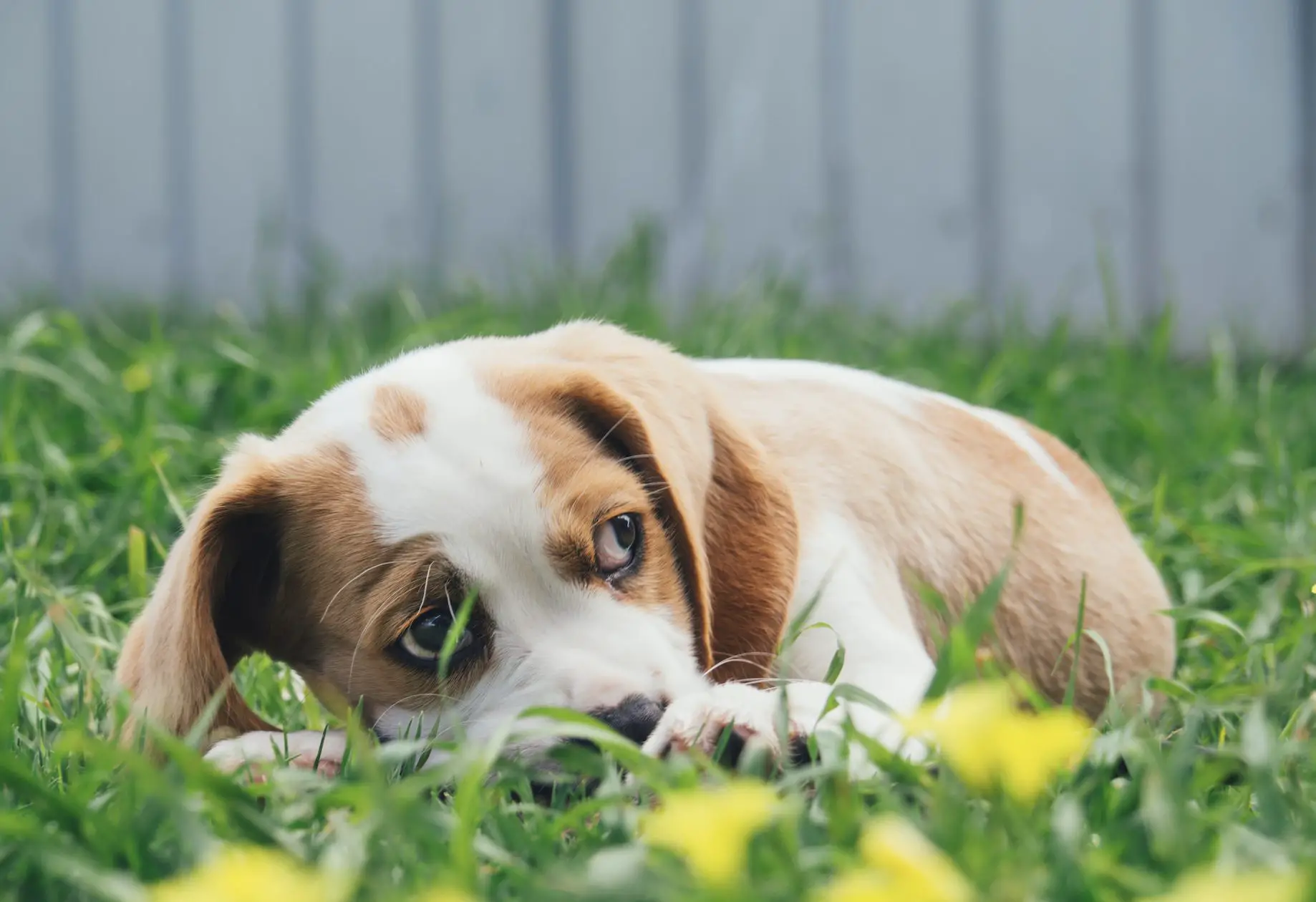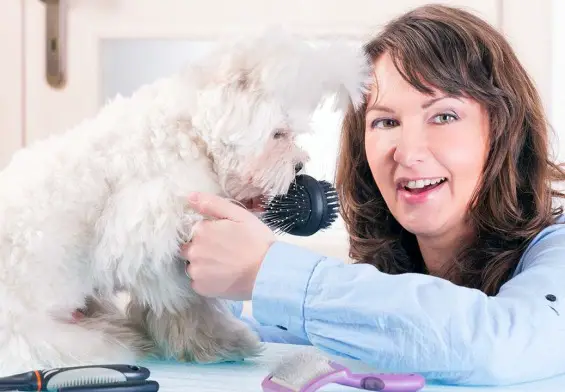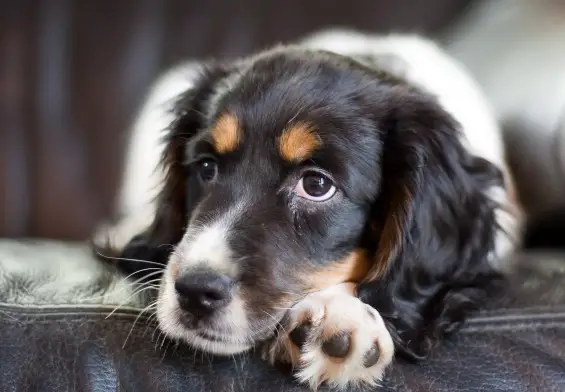When Will My Puppy Start Calming Down? At What Age?
Puppies are at the discovery stage of their life exploring new things; therefore, we expect them to have a lot of energy. Sometimes the energy is a bit much, and they end up taking it out on the things and people around them. This is when you find the dog destroying things or trying to catch your attention non-stop.
While your puppy vying for your attention is typically cute, too much attention-seeking can wear you out. To put some reins on this behavior, there is a need to find ways to burn off that energy.
In this article, we address some of the reasons behind your dog’s high energy and possibly when you can expect them to calm down. We will also provide some tips on how to help your dog calm down; thus, without further ado, let us begin:
Reasons Behind Puppy’s High Energy
It is usual for young dogs to have high energy because every organ in their body is running optimally. It is like driving a new car with a powerful engine; you want to take it for a spin whenever you can. Several causes may be the reason behind your dog’s burst of energy, and we will discuss them below.
- DNA
While it is normal for puppies to have high energy levels, excess energy levels may be due to the dog’s DNA. Certain breeds are born with a zeal for life that is unmatched; such breeds are mostly working dogs such as Terriers or Border Collies. You can train your high-energy dog from a young age to be calmer by enforcing strict training.
- Mental State
Dogs with less exposure to their surroundings will be excited every time they see something new. It would be best if you exposed the dog to new things regularly so that they learn how to take in new information. An anxious or stressed dog will turn its energy into aggressiveness.
It is also possible for dogs to have ADHD, which may require prescription medication to manage it. Talk to your vet to establish if your dog’s energy levels are normal or it suffers from dog ADHD.
- Sex
The sex of the dog has an important part to play when it comes to energy levels. Female puppies reach adulthood faster than males, which forces them to mature earlier. Male puppies without responsibility maintain a care-free existence, and they will need training to avoid any behavioral issues.
- Socialization
Learning how the hierarchy works is important for young dogs because they will understand their position in the dog world. If you have several dogs, the older dogs will put the puppy in its place when it misbehaves. The puppy can emulate the older dog’s calmness and learn how to operate within set boundaries. We are not saying that the puppy will stop having high energy levels overnight, but it will stop the puppy from going crazy and destroying things.
- Diet
The diet your dog gets may be affecting its energy levels. A well-balanced diet and a good sleep cycle contribute to a dog’s high energy as they at peace. Giving dogs foods rich in phenylalanine, like turkey and chicken, causes increased decomposition of dopamine. You can consult your vet to get a meal plan that ensures your dog is healthy without affecting its energy levels.
How A Puppy’s Age Affects Its Energy Levels
Even though your puppy is naturally blessed with high energy, the energy levels will not remain the same as they become adults. Dogs go through different life stages as we do; hence, by the time your dog hits old age, the high energy would have dissipated entirely. Let us look at the different energy levels according to the dog’s age below.
Zero to 10 Weeks
When new-borns arrive into the world, they cannot do much because they can barely see. All they want to do is feed and sleep. As they hit two-weeks of age, their sight starts coming in, and even at that, they are still not that active. They need their mother around, so they hardly travel far enough to cause trouble.
The mother will draw them to herself when they try to stray until they are a little older. As their sight improves and they learn to walk, the energy levels increase bit by bit until they have the energy to run around and follow human tracks.
Considering that puppies come in litters, they start socializing within themselves and setting up their hierarchy. This is the most innocent stage; therefore, you should cherish it before they grow up and turn into little adorable but destructive monsters.
From 10 to 16 Weeks
At this age, they start to get the hang of things, and training is essential at this stage. The earlier your puppy is trained, the better for behavioral development. Puppies at this stage are energetic, but the energy levels are yet to reach optimal heights; hence, you are safe for a while.
All you need to do is observe them and be patient as the training takes effect. Remember that puppies have a short attention span at this age, so training might take longer than expected. They are a bit stubborn at this point, but as a dog owner, you should expect that because that is when teenage-hood comes calling.
This is also where their permanent teeth start coming in; therefore, it is crucial to give them chew toys before they start biting into shoes and other items in the house.
From 4 to 6 months
Your dog is vaccinated, growing healthy, and has a bit of training, so they are not acting out. The next step is socialization with other dogs. Now that you can take the dog for walks without fearing for their health, you might notice their energy levels rise when they come into contact with other dogs.
The dog might be friendly or aggressive to other dogs, which is normal because they are establishing their protective boundaries. They might have a lot of energy to spare at this age, but they direct it to other dogs.
You need to note overly aggressive behavior or anxiety and deal with it before it becomes a bigger problem in the future. Get tips from the trainer on dealing with an aggressive dog that lashes out or a fearful dog. Because the dogs are still growing and learning, you don’t want destructive behaviors to stick around long enough to be set in stone.
From 6 months to 1-year Old
At this age, regular exercise and consistent training are essential to burn off excess energy. The dog has been around for a while, and now they have an idea of how to act in their surroundings. They can understand basic rules, so they should not be chewing on things or trashing the apartment when you leave them alone.
Those who have been waiting for their dog to be calm can relax as this is the stage where they start to mellow out. It will not happen overnight, and neither will the energy levels drop significantly, but at least the dog is grown enough to know how to behave in public.
From 1 to 2 years Old
Your dog is no longer a puppy; it has graduated to adulthood which happens between one or two years. By now, your dog is thoroughly socialized and more mature; thus, the excess energy should have dissipated. You still need to instill the training the dog received, but other than that, there are no significant issues to deal with.
It might have been an annoying stage, but strangely, you will miss the times they had so much energy that they seemed to be bouncing off the walls.
Tips to Calm Down Your Dog
Even though your dog is a bubble of energy, it does not mean that you let that energy build up in the dog as this spells disaster. There are ways that you can release this energy and remain with a calmer and more socially balanced dog. Some of these tips are simple, but they will go a long way in maintaining a calm dog.
#1 – Frequent Exercise
Letting your dog laze around is not a good idea because all that energy will go to something more destructive. Taking your dog for frequent walks is a way to let them burn off some energy. Those with dogs that enjoy running should let them loose in the park while playing fetch. A few hours spent running around daily should result in a well-rounded dog, and it will be suitable for bonding time.
#2 – Crate Training
The crate is useful when looking to transport the dog or put it in time out. Crate training is not an easy task because no one wants to look at their dog whimpering in fear. It takes time for dogs to treat the crate as their home, but they get used to it after a while.
The easiest way to start crate training is when they are small; that way, they can relate to it easily when they are older. Whenever your dog is acting out, put it in the crate and let it calm down; eventually, it will associate the crate with calmness.
#3 – Routines
Predictability is good for dogs because it helps them set expectations. Dogs should have specific eating, exercise, or playtime so that they can develop optimal mental systems.
A dog subjected to no routine will not have adequate time to release all the pent-up energy. They may have 12 hours of pent-up energy and only have an hour to release it, which does not leave the dog in a better position. Set a routine and stick to it unless you can handle an unruly dog.
#4 – Mental Stimulation
A bored dog can be an aggressive dog. Just like humans, dogs need mental stimulation to keep them from investing in bad habits. Instead of tearing through furniture, your dog could be playing with attention-grabbing toys or using puzzle feeders, or interacting in other games. Give your dog something fun to consume their energy, and they will feel less anxious or stressed.
#5 – Ignore The Dog
Attention for dogs is as essential as food, but sometimes a clingy dog can push you to the end of your rope. If your dog is continuously asking for attention, just ignore it until it calms down. It may not seem like a nice thing to do, but it will result in the dog using hyperactivity to get attention if you feed into the habit.
When you get from work, maintain a calm demeanor, forcing the dog to calm down even though they are excited to see you. Remember that dogs mirror energy; therefore, if you remain calm, the dog will remain calm.
#6 – Obedience Training
Training of a puppy should start as soon as they can understand directives. Both house and crate training is important, but your dog needs to get obedience training. An obedient dog will follow commands with no objection; when you order them to stay still and calm down, they must obey the order.
Train your dog to have discipline, and you will see them mellow out after some time. If you have a working dog, obedience training is essential because you don’t want to deal with a distracted dog that is everywhere.
Conclusion
Every dog has its own way of doing things, and thus, the time that one dog mellows out may not be the same for another dog. Regardless of your dog’s personality, good training goes a long way in keeping a dog calm. Good training paired with regular exercise could be the secret weapon against hyperactivity; however, if all fails, medication is available.
Please do not give your dog medication unless the vet approves it because some of the medications available have adverse effects on some breeds. Consult your vet to get an informed opinion and take it from there.
A highly energetic dog will not maintain the same energy levels all its life; keep calm, life will get better as they grow older.





